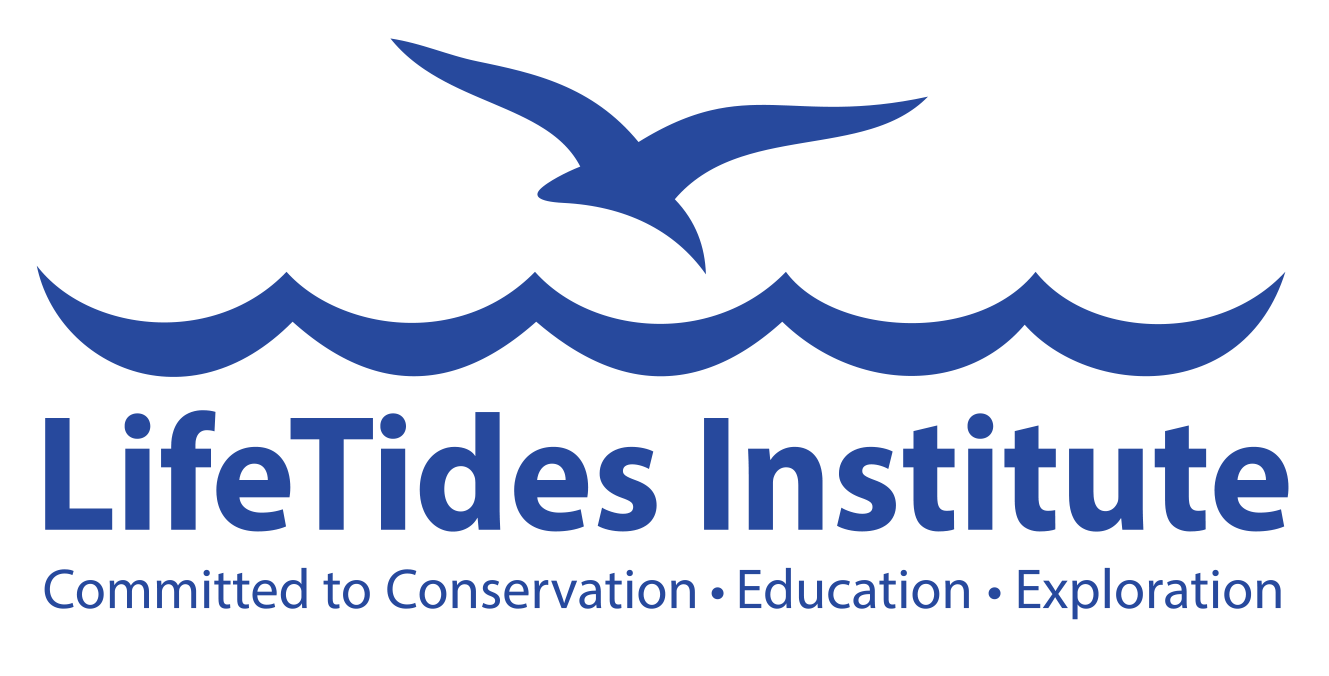LifeTides Student Curriculum Overview - Page Three
7. Energy flow through Margaret's Island
Students will learn about the role of energy through the various habitats within the Lowcountry region through a field trip around Margaret’s Island. A preliminary review is given that identifies the sun as the basis of energy, yet how energy is used, lost and transformed throughout the environment. Through factors such as wind, water (currents), stored energy, chemical reactions and loss of heat. This lesson also observes the degradation of energy within habitats, species and the ecosystem.
Student Learning Goals: “I can explain energy flow and can explain how this affects the abundance and distribution of different species.” •”I can demonstrate an understanding of how my choices may have an impact on biodiversity and my world”.
Success Criteria: ”I answered the written response questions during the debrief.” • ” I actively participated in discussion and responded to discussion or questions posed by my teacher. We discussed how humans influence energy flow through local communities. We also discussed what kind of actions each of us may take to help reduce our impact upon community structure and function.”
Terms: energy, energy memory, storage, maximum power, recycling, primary producers, consumers, ecological succession, disturbance, stability.
Relevant Standards: 6th Grade (6.S.1A.8, 6.E.2, 6.P.3, 6.L.4), 7th Grade (7.EC.5, 7.S1.A.4.), 8th Grade (8.E.5), High School (H.B.3, H.B.6D., H.E.5., H.E.6)
A wood stork (Mycteria americana), foraging in the marsh mud.
8. Environmental Structure & Degradation of Grass into Marsh-mud and its importance to the environment - Length: 1.0 hours, all grade levels, but more advanced content with middle and high school.
This lesson introduces and explores the main elements of a salt marsh ecosystem and discusses why it is important to the local environment. The lesson also defines what main species of plants and animals occur in salt marshes and mud. Students visit a tidal creek and collect biological and water samples and and will identify species within marsh habitat.
Student Learning Goals: Primary: To see and feel the elements of the marsh at Margaret’s Island. To be able to name and draw some of the animals and plants that rely upon the marsh as a home and for food.
Secondary: To see and feel the elements of the marsh at Margaret’s Island and I describe the cycle of marsh grass growth, death and degradation. To be able to explain what plough mud is and why it is important to the marsh. • “I can define the word 'trophic' and I can explain what it means in the marsh ecosystem.” • “I can describe what a 'keystone' species is in general and I have explored and discussed what possible keystone species might exist at Margaret’s Island.”
Success Criteria: ”I am able to draw and explain to others what the marsh grass is and how it provides food for other plants and animals”. • I answered the written response questions during and following the field excursion.” • ” I actively participated in discussion and responded to discussion or questions posed by my teacher. We discussed what kind of impacts that the marsh faces from natural impacts and the possible effects from people. We discussed actions that each of us may take to help reduce our impacts upon marsh ecosystems in my community.”
Terms: Marsh grass, wrack, plough mud, microbial, crabs, shrimp, fish, detritus, Uca pugnax.
Relevant Standards: 4th Grade (4.S.1.; 4.E.2; 4.P.4A); 5th Grade (5.E.3:, 5.L.4, ); 6th Grade (6.S.1A.8, 6.E.2, 6.P.3, 6.L.4, 7.L.3A.2), High School (H.B.3., H.E.5., H.E.6)
9. Native Plantings on Margaret's Island - Length: 1.0 hours, all grade levels.
Some landscaping plants do well in our yards while others require more water or other types of care to survive. This lesson explores how the use of plants that are native to the local environment are better adapted to local climate and weather conditions and how they help support animal species and insects, such as bees, butterflys, birds and other pollinators. Students will visit Margaret’s Island and will participate in review native plants on the island and help plant a small number of new seedlings (under the supervision of my instructors) to support bees and other pollinators. Students will discuss the importance of each planting and how it will benefit the species on the island and its general importance to the environment.
Student Learning Goals: “To explore native plants at Margaret's Island, and understand how their presence benefits insects and other animals and how their use can reduce demand for water resources.” • ”I can describe what function at least one native plant has at Margaret's island and I can explain why planting it can help the environment there.”
Success Criteria: ”I explored the different plants and their locations using my observations and some by measuring or using scientific tools - I understand what the purpose of the tool is and what the specific measurement means and why it is used.” • “ I discussed other ways that the environment might be measured.” “I helped my team by participating in chores to support native plantings at Margaret's island and I can identify at least one species or plant or animal that the action benefits.” “I explained at least one impact to my teacher that my choices could have on my world” (for example, when I plant flowers and plants in my own yard).”
Terms: pollinators, fruits, seeds, drought, tolerant, climate, water table, desiccation, succulent.
Relevant Standards: 4th Grade (4.S.1.; 4.E.2; 4.P.4A); 5th Grade (5.E.3:, 5.L.4, ); 6th Grade (6.S.1A.8, 6.E.2, 6.P.3, 6.L.4)



